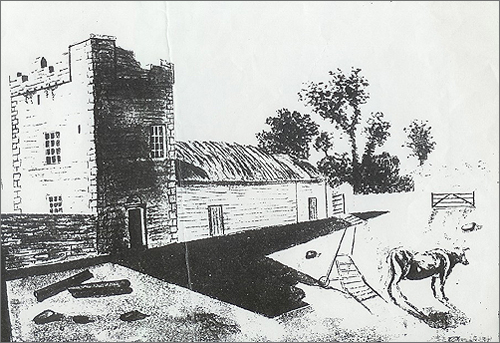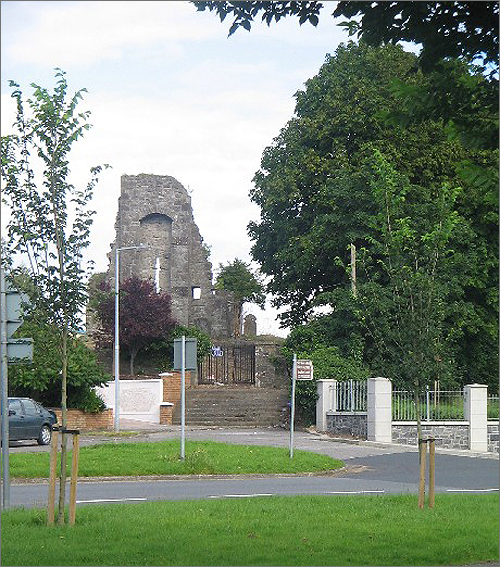|
<< Back to the main Local History page
Often referred to as the ‘new’ Lucan, the area of Lucan South covers a very old and historic landscape. As part of the ancient Royal Manor of Esker, it must have seen holy men, princes and wealthy merchants travel its main highway between Lucan and Clondalkin.
The road in question was part of an early route (c.350AD) stretching from Tara along the Eiscir Riada through the townlands of Lucan, Esker and Clondalkin, finally ending at Bohernabreena. It was one of five roads from Tara – the other four spreading to different areas of Ireland. The only original pieces of this road along here, is the section which passes St. Finian’s ruins, and a short section on the old road at Balgaddy, between Foxborough and the turn for Earlsfort.
Places like Ballyowen - the town of Owen, probably referring to King John; Ballydowd - O’Dowd’s town; Balgaddy - the town of the thieves, most likely a spot where highway men plied their trade on the busy route; Kishoge - the little wicker causeway, some sort of construction over marshy or wet land; Finnstown - after Finn of Cloncurry; Adamstown – after the Adams family, and of course Esker itself (named after the Eiscir Riada) are all familiar in the area even today.
If you lived in this area in the 1200s, you might have been a wealthy farmer or mill owner along the Griffeen, or you might have worked for people by the names of William le White, Thomas de Coventry, Nicholas de Berkeley, Henry Kissok, Adam of Esker or Dermot of Ballydowd.
By the 1500s, Gregory Tweddell who lived in Ballydowd was a yeoman and soldier; Alderman Patrick Browne of Kishoge was a merchant. Place names in the area were: King’s Meadow, King’s Mill, a garden called St. Finian’s, St. Mary’s half-acre, and the Ash Park – most are familiar names today. Thomas Adam who died in 1556 was described as a ‘stout English yeoman’. He desired to be buried in Esker, so we can assume he is somewhere in the burial ground at St. Finian’s Church ruins.
Adamstown Castle

A copy from Adamstown Castle by Gabriel Beringer
In the 1600s, names like Fforster were in Ballydowd Castle, Nottinghams were in Ballyowen Castle, and Kennedys were in Finnstown. The names of Burton and Harborne were associated with Kishoge.
Recession 200 years ago…
Over the next couple of centuries, much of the property changed hands with the coming and goings of the Commonwealth, and the business life of the area all but disappeared around 1801 when the Act of Union was introduced. The corn and cotton mills were no more. Agriculture was really the main activity of the area, apart from what jobs were available along the canal and railway line. Things had taken a turn for the worse in this area, and indeed all over Ireland. Very few places were not affected.
In contrast to today, the earliest record of a school was in 1831 when a ‘Classical School’ for boys, situated just beside St. Finian’s ruins, was run by Mr. Sturgeon. The boys, nine in all, would have come from wealthy backgrounds, paying £2.2.0 each per quarter.

The Ruins of St. Finian’s Church
So Lucan South is not so new after all. It has just been refurbished. The old mills and farms are replaced by shopping centres and housing estates, with a network of roads. There are lots of schools of all kinds in the area, though not nearly enough. The people are different as those from nations all over the world, along with our own now call it home. It would appear that the thriving Royal Manor of long ago, is thriving once again.
Mary Mulhall
(Ref: Treasures of Lucan, Mulhall & O’Flynn; Lucan Old & New, Sr. John Bosco; A History of County Dublin, F.E.Ball)
| 
